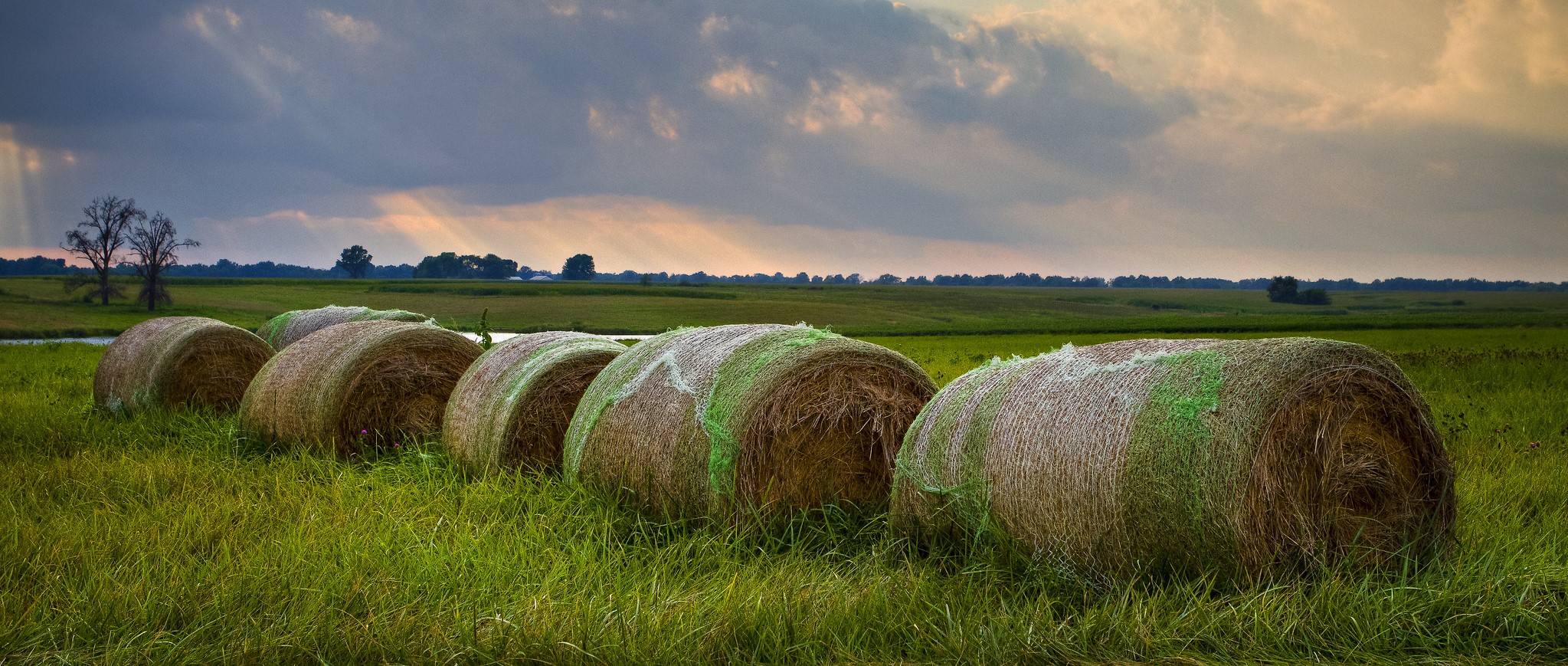MU Extension offers tips to reduce hay loss

KIRKSVILLE, Mo. — Good-quality hay bales are like precious gems. They’re valuable and worthy of your safest storage, says Charles Ellis, University of Missouri Extension field specialist in agricultural engineering.
Proper storage is one way producers can reduce hay waste. Ellis offers a few steps to consider when deciding what hay to store:
- Know your hay’s nutritional value. Sample at least 10 bales of hay from each field and choose the best hay for the best storage. The cost to sample – about $24.95 per composite sample – will save money in the long run and result in a better-quality herd.
- Know your herd’s nutritional needs. Feed your best hay based upon reproductive needs.
High moisture and temperatures speed spoilage. Waste is heaviest at the top and bottom of the bale. The top absorbs moisture from rain and snowmelt while the bottom wicks moisture from the ground. Early cuttings stand in the elements for a longer time and face the most risk of loss.
Ellis gives five tips to reduce outdoor storage losses:
- Make a dense bale. Dense bales shed more precipitation, sag less and hold their shape better.
- Use net wraps. Netting is quicker to install than twine, which means less labor and fuel. Net wraps reduce sag and help the bale keep its shape.
- Choose a good location to reduce ground contact. To minimize bottom spoilage, store in a well-drained area with a 4- to 6-inch rock base or place bales on pallets, poles or railroad ties.
- Position properly. Store end-to-end, in rows, facing northwest to southeast whenever possible. Space adjacent lines at least 10 feet apart.
- Avoid stacking uncovered bales outside. Stacking bales increases losses. Place bales inside in a pyramid stack or on-end to maximize space.
A study at a north-central Nebraska ranch shows that on average 17% of hay is wasted in uncovered twine and net bales after one year. Tarped, twined bales lose 6%, and tarped net bales lose 5%. Ellis says this is a loss of $17.51 per ton of hay. A University of Tennessee study showed a 37% loss on uncovered bales stored on the ground. Netted bales stored on the ground lost 19%. Better yet, covered bales stored on tires lost just 8%, while those stored in buildings lost 6%.
Bale diameter also matters, says Ellis. The smaller the bale, the more dry matter is lost in the outer layers since more of the bale is exposed to the elements. In an Oklahoma State University study, losses ranged from 8% to 56%, depending on the size of the bales.
The outer 6 inches of a standard 5-by-5-foot bale represents 36% of the bale, or $37.08 per ton. Protecting this outer layer is critical to reducing loss, says Ellis.
For more information on how to improve forages, visit the Alliance for Grassland Renewal website at www.grasslandrenewal.org or see the MU Extension guide “Making and Storing Quality Hay” at extension.missouri.edu/g4575.
Miss Clipping Out Stories to Save for Later?
Click the Purchase Story button below to order a print of this story. We will print it for you on matte photo paper to keep forever.

